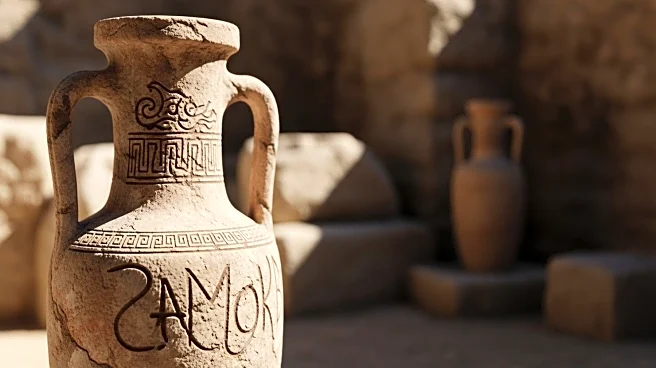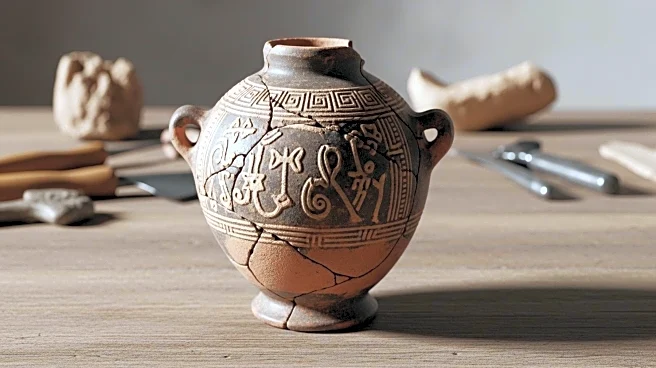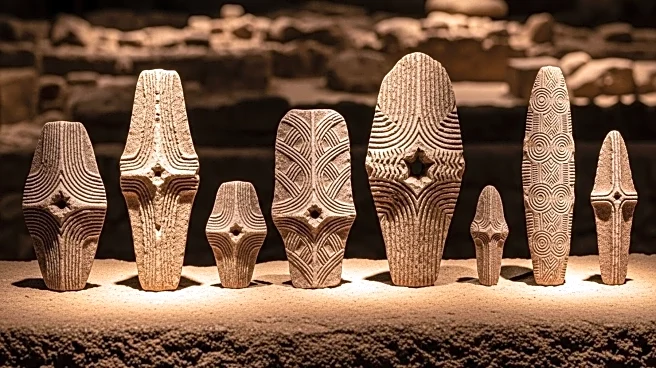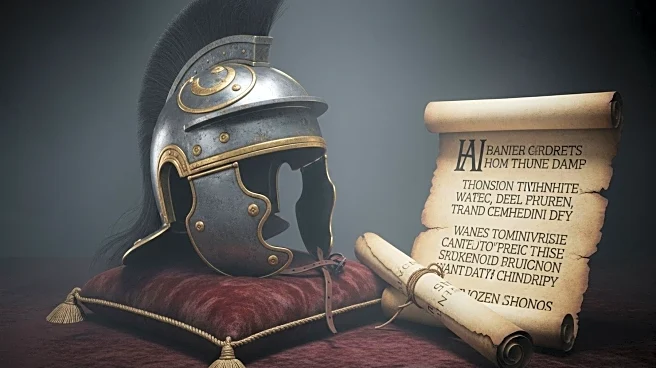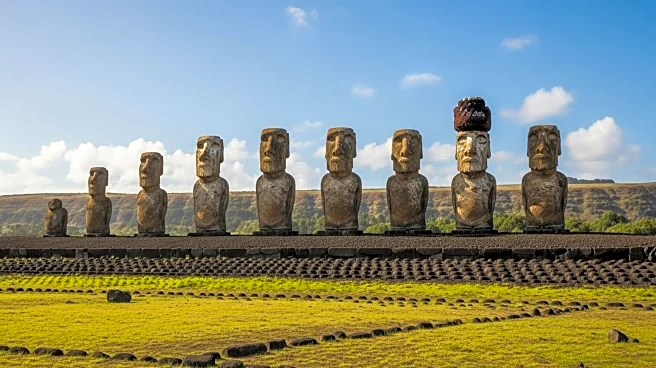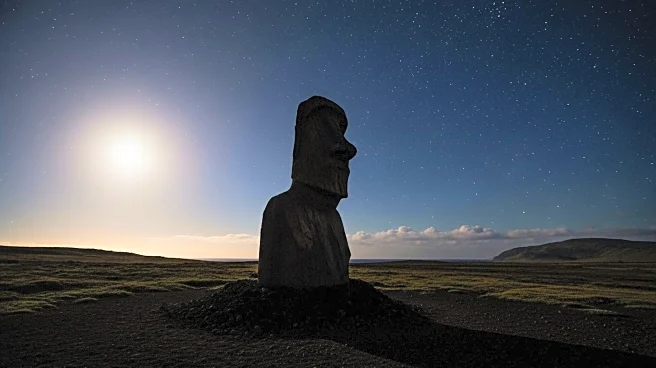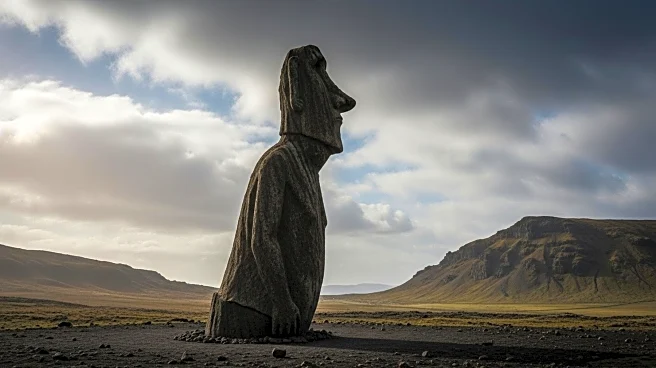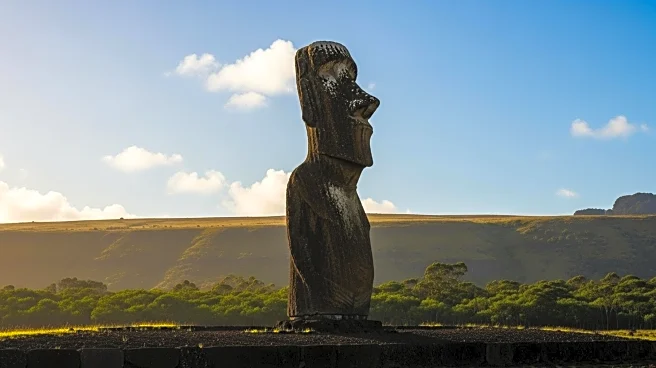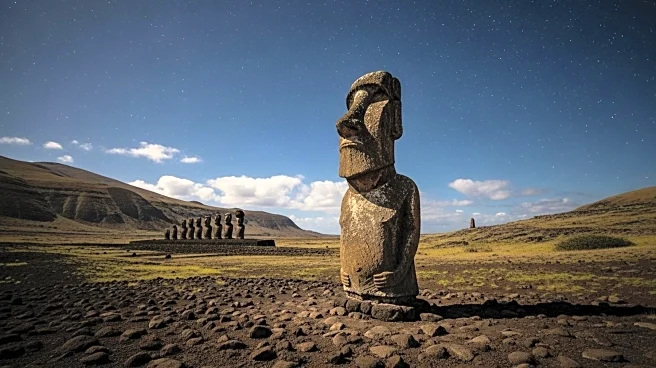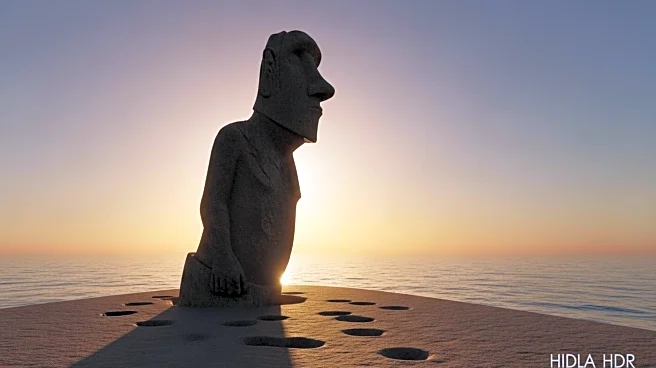What's Happening?
Recent research by U.S. anthropologists and archaeologists suggests that the iconic moai statues on Easter Island may have been 'walked' into place by the Rapa Nui people. This theory, initially demonstrated in a 2012 experiment, involved rocking the statues side-to-side using ropes, allowing them to move forward. The study, published in the Journal of Archaeological Science, counters previous beliefs that the statues were transported horizontally on wooden rollers. The researchers used physics, 3D modeling, and new experiments to support their hypothesis, noting the statues' D-shaped bases and the roads built by the Rapa Nui as evidence of this method.
Why It's Important?
The findings challenge long-held theories about the environmental impact of the Rapa Nui's statue transportation methods, which were thought to contribute to deforestation and ecological collapse. By suggesting a less resource-intensive method, the study offers a new perspective on the island's history and the ingenuity of its inhabitants. This research may influence how archaeologists and historians interpret ancient engineering and cultural practices, potentially reshaping narratives about human adaptation and resource management.
What's Next?
Further research and experiments may be conducted to validate the walking theory and explore its implications for understanding the Rapa Nui's societal organization and technological capabilities. The study may also prompt reevaluation of other archaeological sites and methods, encouraging interdisciplinary approaches to uncovering historical truths.
Beyond the Headlines
The cultural significance of the moai and the Rapa Nui's methods of transportation reflect broader themes of human innovation and resilience. The study highlights the importance of integrating indigenous knowledge and oral traditions into scientific research, offering a more holistic view of history and cultural heritage.

